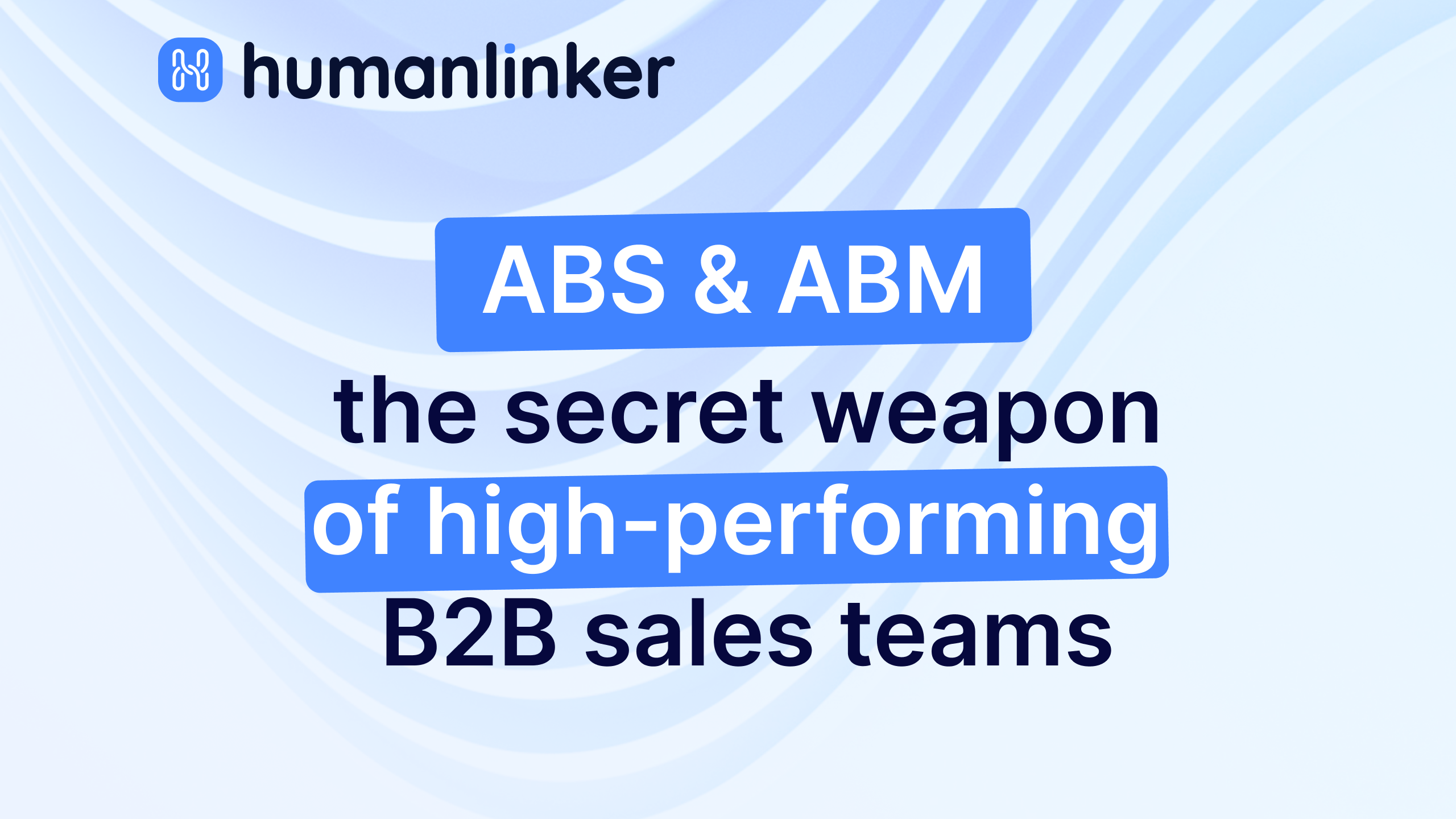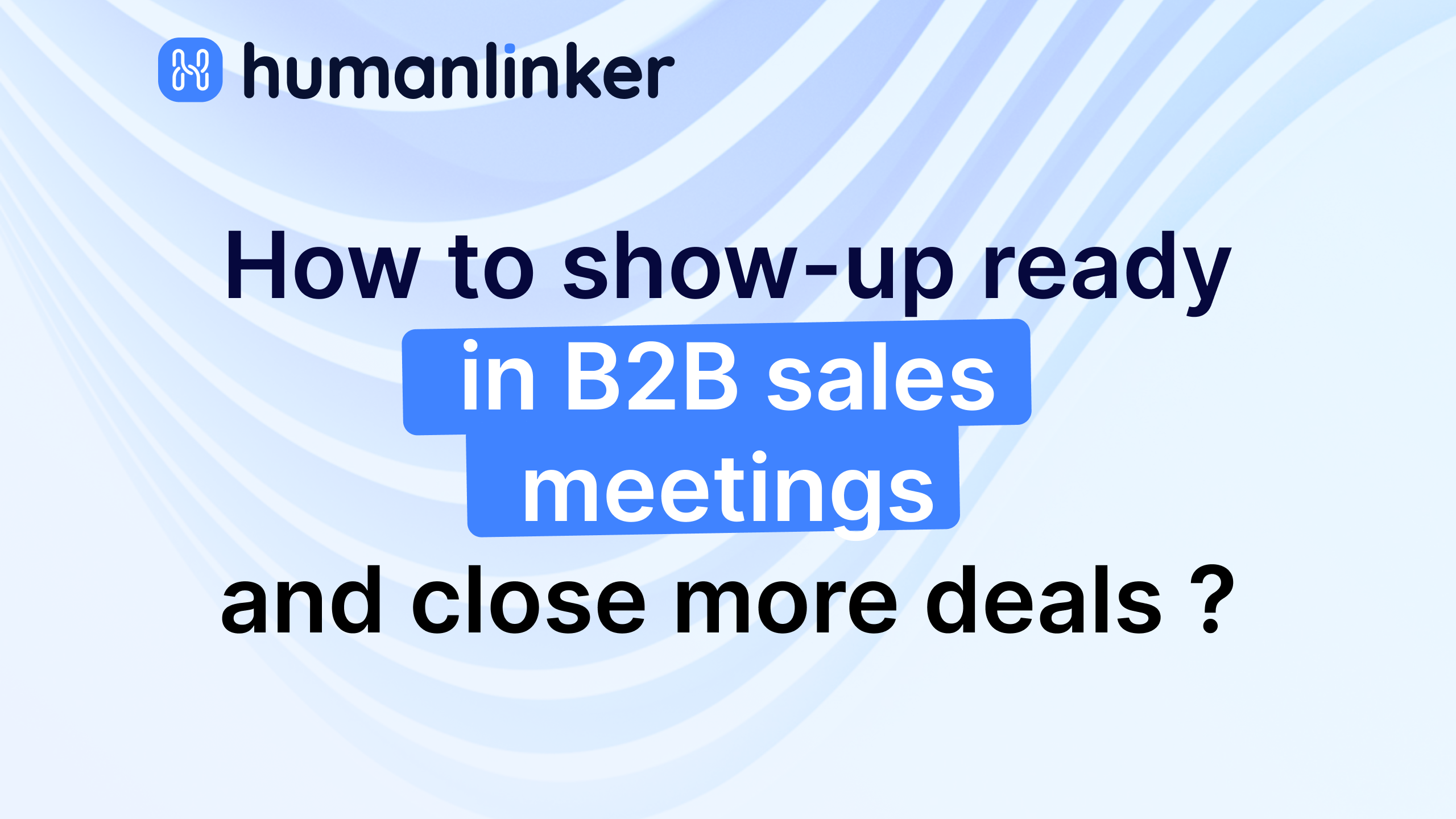Sales Prospecting: The Power of Personalization & CRM

Companies are, in a race to attract customers and drive sales. In todays content driven era the art of prospecting is evolving, merging data intelligence with marketing strategies to help businesses stand out. Effective outreach campaigns have moved away from calling and now rely on highly targeted email techniques. The use of tools like CRM and automation has transformed the process enabling teams to deliver personalized content based on a prospects interests and behaviors.
For instance companies may leverage platforms such as LinkedIn or even podcasts to connect with customers. Video content is also gaining popularity as an outreach strategy offering captivating ways to engage with leads. Of sending mass emails outbound emails are now carefully crafted with personalization in mind to ensure they resonate with each individual recipient.
However it's not about using the tools or strategies: it's about gathering insightful knowledge and applying it effectively. Teams that make use of these insights can create customized strategies, for each customer fostering not engagement but long lasting relationships.
So if you're still using outreach to sell or if your team hasn't explored the potential of personalization and automation now is the time to do so. Remember, in the world of business to keep your company thriving and ahead it's not only, about having people on board: you need the strategy, tools and insights. Welcome to the future of sales prospecting!
Section 1: Understanding Sales Prospecting within CRM
Sales prospecting plays a role in any sales strategy. Essentially it involves identifying customers and engaging with them with the aim of converting them into paying customers. Thanks to Customer Relationship Management (CRM) systems this process has become more efficient and effective.
1. What is CRM?
Customer Relationship Management (CRM) refers to a system or suite of tools that companies utilize for managing, analyzing and streamlining interactions with both existing customers throughout their journey. It's not an address book: rather it is a powerful tool that provides valuable insights, into customer behaviors, interactions and preferences.
2. Sales Prospecting and the Role of CRM:
A Single Source of Information: One of the purposes of a CRM system is to act as a database where all prospect and customer details are stored. This ensures that the sales team can easily access client information without wasting time searching for it and it helps avoid missing out on follow up opportunities.
Rating Leads: By utilizing data points a CRM system can assess and rank leads based on their potential to convert into customers. This allows sales teams to prioritize their efforts on leads that have a likelihood of generating business.
Segmentation, for Targeted Approach: CRMs provide the ability to segment prospects based on criteria such as demographics, past purchasing behavior, interaction history and more. This categorization enables sales teams to tailor their strategies when approaching each segment.
Monitoring and Analytics: A CRM system keeps track of every interaction with prospects starting from the contact. This wealth of data is valuable, in understanding the effectiveness of outreach methods, response times and overall sales process efficiency.
Outreach: Sales representatives can utilize the data from the CRM to create personalized outreach campaigns whether through emails phone calls or social platforms.
Efficiency and Automation: Advanced CRMs come with automation capabilities. This means that repetitive tasks such as sending follow up emails or setting reminders for calls can be automated, allowing the sales team to focus on responsibilities.
Continuous Learning: By logging and analyzing every interaction the CRM becomes a repository of knowledge. Teams can identify what strategies are effective which ones require refinement and continuously optimize their efforts.
In conclusion when sales prospecting is seamlessly integrated into a CRM system it transforms from a hit or miss approach to an data driven strategy. Companies gain insights into their prospects ensure relevant interactions and significantly increase their chances of converting leads into loyal customers. It's no longer, about finding prospects: it's truly understanding them.
Section 2: Effectively Harness Personalized Content
In todays dynamic business landscape one size fits all approaches are no longer sufficient.
The era of outreach and broad campaigns is fading away. Nowadays the focus is, on creating personalized content. The more you understand about your customers the better you can tailor your interactions to them resulting in effective engagement and increased conversion rates.
1. The Significance of Personalized Content:
Enhanced Engagement: Personalized content naturally resonates better with the recipient. When a potential customer feels that the content directly addresses their needs and preferences they are more likely to engage with it.
Improved Conversion Rates: Research has shown that personalized content can lead to conversion rates since it addresses the needs or issues of the potential customer.
Building Trust and Loyalty: content based on preferences and challenges demonstrates to potential customers that your company has taken the time to understand them. This builds trust and fosters long term loyalty.
2. Strategies for Personalization:
In-depth Analysis of Data: Utilize the data collected from CRM systems website analytics, social media insights and other tools. Gain an understanding of your customers behavior, needs, preferences and previous interactions, with your brand.
Segmentation: Segmentation plays a role, in CRM. It involves tailoring content to segments of your audience taking into account factors like demographics, behavior or purchasing history. This targeted approach can have a impact on your audience.
Dynamic Content: Utilize tools that allow for dynamic content adjustments based on the viewer. Email marketing platforms often provide features that enable you to customize content according to the recipients data.
3. Tools and Techniques:
Content Recommendations: Employ algorithms and AI tools that suggest content to users based on their behaviors similar to how streaming platforms recommend shows or music.
Interactive Content: Create engaging content such as quizzes, calculators or interactive videos that deliver results or feedback based on user input.
Retargeting: Implement retargeting strategies to display tailored content or ads to users who have previously interacted with your brand.
4. Potential Challenges and Solutions:
Overpersonalization: It is important not to cross the line, between personalization and being overly intrusive when delivering customized experiences.Always make sure you respect privacy rules and avoid making the person feel like they are being excessively monitored.
Managing Data: Dealing with amounts of data needed for experiences can be overwhelming. Invest, in CRM systems follow practices, for data management and always comply with data protection regulations.
In summary customized content is both the present and future of marketing and sales strategies. Companies that dedicate time and resources to creating tailored experiences for their customers will enjoy benefits in terms of engagement, conversions and customer loyalty. In a world flooded with content the relevant and personalized messages will truly stand out. Leave a lasting impact.
Section 3: Strategies for Outgoing Emails
emails which are commonly seen as essential in sales and marketing outreach have undergone a transformation. With the advancements in technology and personalized tools businesses now possess the means to enhance their email strategies to levels. Lets explore the techniques that can enhance the impact of emails:
1. The Power of Personalization:
Dynamic Insertion of Content: Modern email marketing platforms allow users to include personalized fields, within their emails. This can involve adding the recipients name, company information, past interactions and other specific details that make the email feel tailor made for the individual.
Outreach Based on Behavior: Send emails triggered by actions or behaviors. For instance if a prospect has downloaded a whitepaper from your website follow up with a related case study.
2. Crafting an Attention Grabbing Subject Line:
Engage and Intrigue: Your subject line should arouse curiosity and entice recipients to open your email. It often serves as the deciding factor determining whether your email will be read or not.
Avoid Using Words that Might Trigger Spam Filters: It's important to be mindful of your word choice and stay away, from words like "free " "deal," or "discount" since they can potentially activate spam filters.
3. Structuring the Email Content:
Be Clear and Concise in Your Messaging: Make sure to get straight to the point. You can use bullet points or short paragraphs to present your content in an manner.
Provide a Call to Action (CTA): Clearly state what you would like the recipient to do next whether its scheduling a call, watching a video or downloading a resource.
4. Conducting A/B Testing:
Experiment with Variations: Try out subject lines, email content, CTAs and sending times to determine what resonates best with your audience.
Analyze and Improve: Continuously refine your email strategy by analyzing the data collected from A/B tests.
5. Automate and Sequence Your Emails:
Implement Drip Campaigns: of sending one email consider creating a series of emails, over time. This approach can help nurture leads. Guide them through the sales funnel.
Up Timing: If you don't receive a response it's an idea to set up an automated follow up email to be sent after a specific number of days. However make sure it doesn't sound too robotic and maintains that touch.
6. Incorporating Multimedia and Interactive Elements:
Include Videos or GIFs: Adding videos or GIFs to your emails can help them stand out and make your message more engaging.
Interactive Content: Make your emails interactive, by incorporating elements like polls, quizzes or clickable infographics that encourage recipients to interact with the email.
7. Keeping Your Mailing List Clean and Up to date:
Avoid Bounces: Regularly. Remove addresses from your mailing list. High bounce rates can have an impact on your sender reputation.
Segmentation: like personalizing content segmenting your email list based on criteria helps ensure that your messaging is relevant, to each specific group.
8. Adhering to Regulations:
Consent is Important: prioritize obtaining consent when sending emails.Make sure you have obtained consent to email the individuals, on your contact list especially considering regulations like GDPR and CAN SPAM.
Option to Unsubscribe: Always provide a way for recipients to opt out or unsubscribe from receiving your emails.
In summary while outbound emails remain a method for prospecting the approach has evolved. Successful outbound email campaigns today rely on data driven insights, personalized content and continuous testing and improvement. The goal is not just to send emails but to deliver relevant content that recipients genuinely want to engage with.
Conclusion
As we navigate the changing landscape of sales prospecting it is clear that traditional methods of outreach no longer yield desired outcomes. The modern business environment demands a shift towards personalized data driven and technologically advanced approaches.
By leveraging CRM systems businesses can. Optimize their prospecting endeavors. This ensures reaching the individuals with tailored messages at the opportune moments. Such an approach not streamlines the sales process. Also fosters stronger and more meaningful connections with potential clients.
Moreover the emphasis on personalized content underscores the significance of interactions, in todays era.
Customers nowadays have expectations when it comes to content. They want valuable information that truly engages them. This level of personalization can only be achieved through thoughtful efforts.
Emails that were once simple now require a approach combining creativity, with data analysis. Employing strategies like A/B testing, segmentation and interactive content allows companies to create email campaigns that deeply resonate with their target audience.
In summary the future of sales prospecting lies in hyper technology and continuous evolution. Companies that recognize these trends and adapt accordingly will position themselves as leaders in their industries. This will enable them to establish connections and drive growth. Embracing these methodologies is not just beneficial—it's essential, for businesses looking to thrive in a competitive market.

AI in B2B sales: the top trends to improve conversion and customer retention

When ABS Meets ABM: The Power Duo to Transform B2B Sales




Find out in 30 minutes how Humanlinker can help you achieve your goals.



